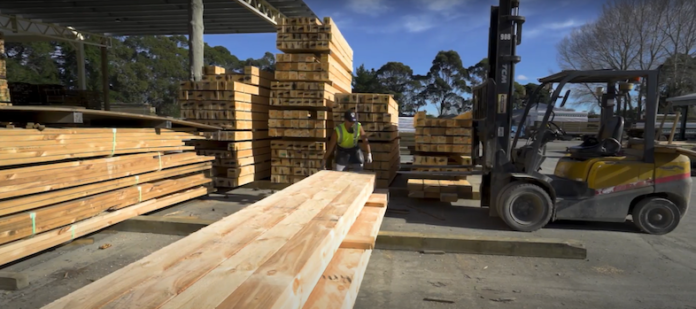Why is Northland sawmill Northpine increasingly focusing on specialty timber products, including SG10, when the country is desperately short of standard SG8 building products? Wouldn’t it be easier to just produce as much standard timber as possible and try and achieve better economies of scale? General manager Bruce Larsen provides some answers . . .
The above questions are frequently asked around the Northpine board table, and the answer to the second question so far has been a resounding and emphatic “no”.
Like many smaller sawmills around the country, Northpine doesn’t have the financial capacity of bigger or more established processors to invest tens of millions of dollars into plant that will achieve significant economies of scale. But it does have two key advantages:
• Location and climate
Northland grows the densest and, therefore, strongest and stiffest radiata pine in New Zealand. So it’s a great raw material for producing the higher structural grades of SG10 and SG12, as well as for the bigger structural members that otherwise can only be achieved with Engineered Wood Products (EWP).
• Flexibility
The simple and relatively manual older-style milling plant means the company can be very flexible and nimble with what it produces. This is ideal for small-batch specialist products.
At present, almost all merchants are short of at least some, if not most, structural timber products. Builders and civil contractors must currently plan well ahead if they want relatively uninterrupted product supply. This message is still not well understood by some.
But the current situation will change — the day will come when the big players in the industry are fighting for share in a smaller marketplace.
Prices will inevitably drop and standard timber supply will be abundant. This is not a comfortable place for a small-scale manufacturer as they would simply not be able to compete.
Northpine sees a future where verified solid wood beams, square posts and higher quality structural grades such as SG10 and SG12 are more commonly used.
Using less timber but stiffer and stronger studs and joists will fit in with increased spans, and a desire to use less material which reduces weight, carbon footprint and, in some cases, the use of additional materials.
Current BRANZ seminars/webinars with the theme of The Carbon Challenge deal with crucial issues such as this.
The price of specialist solid wood products compares favourably with EWP, and it has the advantage of taking standard treatment solutions with no problems.
Whether H1.2, H3.2 (wet or dry), or even H5, solid wood components have a proven track record that is hard to match.
The “piece lot” distribution of Northpine’s Northbeam range means only what is needed for a particular job can be ordered, leaving neither the merchant nor the customer worrying about unnecessarily large quantities or packet lots.
We see a future where value for money dictates that specifiers and builders will find innovative ways to use increasing volumes of specialist solid wood components in a “built environment” where timber increasingly dominates.




